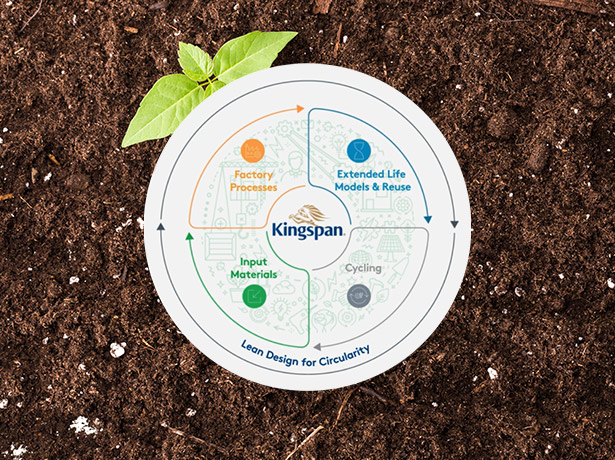According to the 2021 Circularity Gap Report, to keep our world livable and thriving, we need to double global circularity from 8.6% to 17%. The report highlighted that the circularity gap is widening, and “our current linear economy is firmly steering us towards a 3- to 6-degree temperature increase.” According to the report, if we continue business-as-usual, we will emit 65 billion tons of Green House Gas Emissions (GHGs) in 2030.
It is clear that closing the circularity gap is fundamental to fighting climate change. While industries across all sectors can help close this gap, the global construction sector will play a critical role in accelerating the circular economy.
A circular economy as defined by the Ellen Macarthur Foundation is “regenerative by design and aims to gradually decouple growth from the consumption of finite resources.” The Foundation describes an economy that is restorative and regenerative as one based on the principles of designing out waste and pollution, keeping products and materials in use and regenerating natural systems.
A more circular world should be a top priority for the construction sector considering that the construction industry is one of the largest contributors to carbon and greenhouse gas emissions. In fact, embodied carbon – carbon used in the manufacturing, construction and disposal of building materials - will be responsible for half of the entire carbon footprint of new construction between now and 2050 according to estimates from The World Green Building Council. The construction industry is also responsible for an estimated 30% of all waste to landfills globally. These statistics all add up to an industry imperative for circularity with a shift to a more resource-efficient, low carbon approach.
Circularity has the potential to conserve the earth's resources, protect our natural environment and make products in a way that is restorative and regenerative. At Kingspan we are already participating in the circular economy. With a focus on optimizing energy-efficiency, enhancing performance and minimizing the environmental footprint of our products, we are working to drive energy and carbon out of business operations and supply chains and accelerating participation in the circular economy as part of our Planet Passionate initiative.
A key to enhancing the circularity of Kingspan products is our LIFECycle Product Circularity Framework which embeds circularity into every step of the design and manufacturing of our insulated metal panels. Kingspan’s QuadCore® insulation technology is one example of circularity in action.
QuadCore® provides sustainability and longevity in materials and envelope design. With a high R-value and a 30-year thermal warranty, QuadCore® panels are one of the industry’s most thermally efficient, producing airtight interfaces that have the potential to lower a building’s overall energy use and emissions and even decrease the size of the HVAC system needed to keep the building at a comfortable temperature.
QuadCore® demonstrates how more sustainable building products, combined with high-performance building envelope design, have the potential to save enormous amounts of energy and carbon which can help close the circularity gap. The 2021 Circularity Gap Report noted that through smart strategies and reduced material consumption, the circular economy has the power to shrink global GHG emissions by 39% and cut virgin resource use by 28%.
At Kingspan, our focus is on developing solutions that support circularity from the design stage all the way through to the product end-of-life. With goals of upcycling 1 billion PET bottles per annum into insulation products to zero company waste in landfills across all sites, we are working to reduce carbon and energy in both our manufacturing processes and products, helping combat climate change by accelerating the circular economy across the global construction sector.


